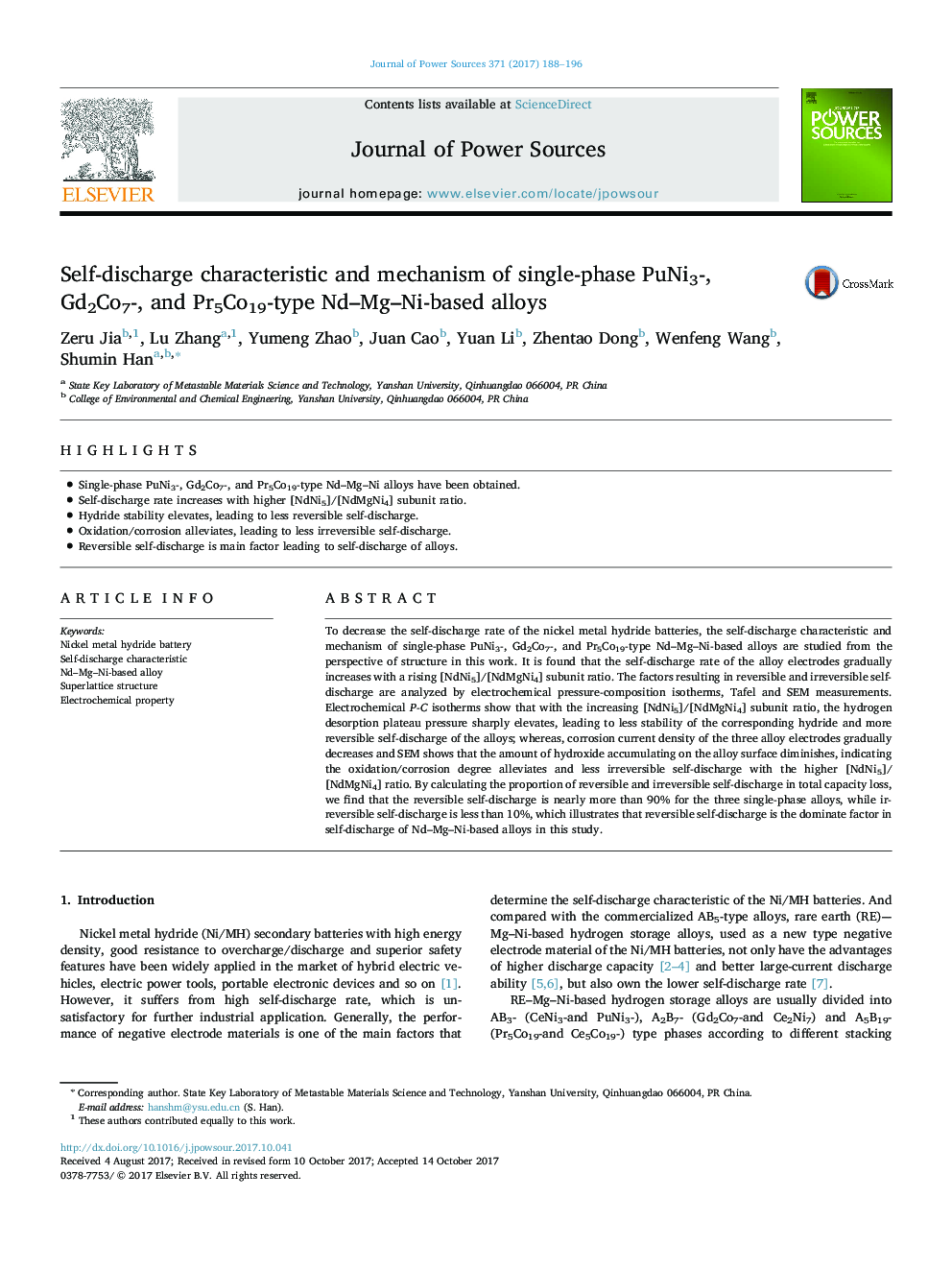| Article ID | Journal | Published Year | Pages | File Type |
|---|---|---|---|---|
| 7726480 | Journal of Power Sources | 2017 | 9 Pages |
Abstract
To decrease the self-discharge rate of the nickel metal hydride batteries, the self-discharge characteristic and mechanism of single-phase PuNi3-, Gd2Co7-, and Pr5Co19-type Nd-Mg-Ni-based alloys are studied from the perspective of structure in this work. It is found that the self-discharge rate of the alloy electrodes gradually increases with a rising [NdNi5]/[NdMgNi4] subunit ratio. The factors resulting in reversible and irreversible self-discharge are analyzed by electrochemical pressure-composition isotherms, Tafel and SEM measurements. Electrochemical P-C isotherms show that with the increasing [NdNi5]/[NdMgNi4] subunit ratio, the hydrogen desorption plateau pressure sharply elevates, leading to less stability of the corresponding hydride and more reversible self-discharge of the alloys; whereas, corrosion current density of the three alloy electrodes gradually decreases and SEM shows that the amount of hydroxide accumulating on the alloy surface diminishes, indicating the oxidation/corrosion degree alleviates and less irreversible self-discharge with the higher [NdNi5]/[NdMgNi4] ratio. By calculating the proportion of reversible and irreversible self-discharge in total capacity loss, we find that the reversible self-discharge is nearly more than 90% for the three single-phase alloys, while irreversible self-discharge is less than 10%, which illustrates that reversible self-discharge is the dominate factor in self-discharge of Nd-Mg-Ni-based alloys in this study.
Related Topics
Physical Sciences and Engineering
Chemistry
Electrochemistry
Authors
Zeru Jia, Lu Zhang, Yumeng Zhao, Juan Cao, Yuan Li, Zhentao Dong, Wenfeng Wang, Shumin Han,
